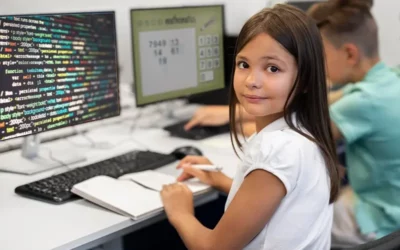Are you looking for engaging and creative activities to keep your kids entertained? Drawing is a fantastic way to unleash their imagination and develop their artistic skills.
Here are 10 fun and easy drawing activities for kids, along with step-by-step tutorials to guide them. From drawing their favorite animals to creating their own superheroes, these activities will spark their creativity and provide hours of entertainment.
Whether your child is a beginner or already has some drawing experience, these tutorials are designed to be simple and enjoyable. So, grab some paper and pencils, and let’s dive into the wonderful world of drawing!
Table of contents
Introduction
Drawing is a wonderful activity for kids that not only provides entertainment but also fosters their creativity and imagination. It allows children to express themselves visually, explore their thoughts and emotions, and develop their fine motor skills.
Drawing encourages problem-solving, critical thinking, and the ability to observe and interpret the world around them. It helps children develop their own unique style and builds their confidence as they see their ideas come to life on paper.
Moreover, drawing promotes concentration and focus, enhancing their cognitive abilities. By engaging in drawing activities, children can unleash their creativity and develop a lifelong love for art.
Easy Drawing Activities for Kids
Here is a list of 10 fun and easy drawing activities for kids that you can search for online or find in drawing books:
1. Draw your favorite animal: Choose an animal your child loves and guide them through drawing its basic shapes, adding details, and coloring it in.
2. Create a self-portrait: Encourage your child to draw themselves by looking in a mirror or using a photo reference. They can add details like their hair, clothes, and accessories.
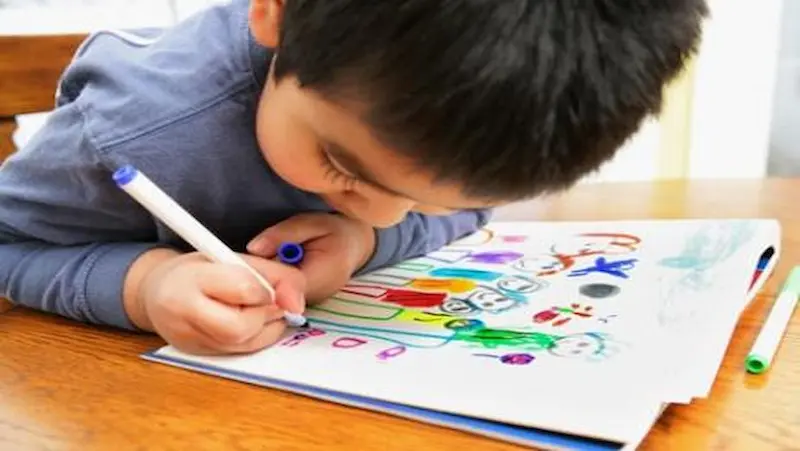
3. Design a superhero: Let your child unleash their imagination and create their very own superhero. They can draw the superhero’s costume, powers, and symbols.
4. Draw a fantasy creature: Prompt your child to invent a unique creature, such as a dragon, unicorn, or mermaid. They can combine different animal features and add imaginative details.
5. Illustrate a favorite book character: Ask your child to draw their favorite character from a book they enjoy. They can recreate the character’s appearance and capture their personality.
6. Draw a family portrait: Have your child draw a picture of your family, including everyone, and add personal touches to each family member.
7. Sketch a still life: Set up a simple still life with objects like fruits or flowers, and encourage your child to draw what they see, paying attention to shapes, shadows, and textures.
8. Create a comic strip: Guide your child to create a short comic strip with a beginning, middle, and end. They can invent their own story and draw the characters and speech bubbles.
9. Draw a favorite landmark: Ask your child to choose a famous landmark, like the Eiffel Tower or Statue of Liberty, and help them draw it with attention to its distinctive features.
10. Design a dream vacation scene: Have your child imagine their dream vacation destination and draw a colorful scene depicting it, including elements like a beach, mountains, or famous landmarks.
Make these drawing activities even more enjoyable and engaging by turning them into family activities!
Remember to search online for step-by-step tutorials and illustrations for each of these activities to provide your child with the necessary guidance and inspiration. By joining in, parents can provide guidance, share their artistic skills, and create lasting memories with their children.
It’s an opportunity for family bonding, laughter, and shared experiences. Get the whole family involved in drawing their favorite animals, designing superheroes, or creating a collaborative family portrait. Not only will this strengthen family connections, but it will also inspire children to see the value and joy of artistic expression as they witness their parent’s enthusiasm for creativity.
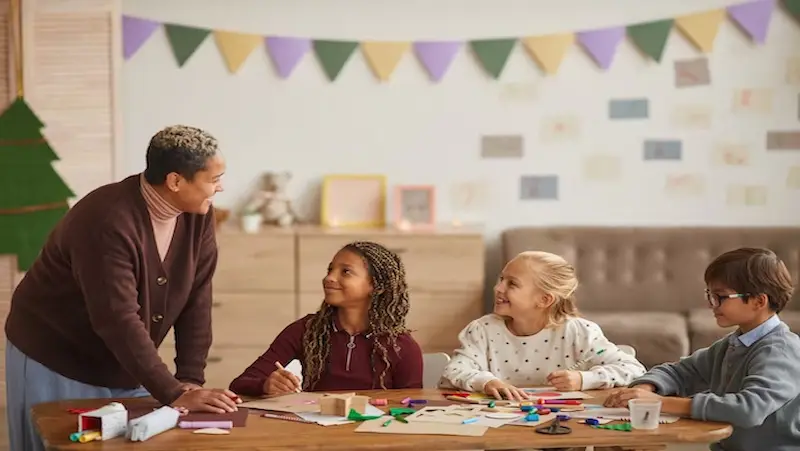
Tips for Encouraging Kids to Draw
1. Create a dedicated drawing space: Set up a designated area in your home where your child can comfortably engage in drawing activities. Provide them with a table, chair, and art supplies, making it easily accessible whenever inspiration strikes.
2. Display their artwork: Showcase your child’s drawings by hanging them on a designated wall or creating a gallery space. This not only boosts their confidence but also encourages them to keep exploring their artistic abilities.
3. Offer a variety of art supplies: Provide a wide range of art hubs for kids’ materials, such as colored pencils, markers, crayons, and watercolors. Experimenting with different mediums can spark creativity and keep their interest levels high.
4. Encourage open-ended drawing: Allow your child to draw freely without any specific guidelines or expectations. This gives them the freedom to express their imagination and helps them develop their unique artistic style.
5. Give positive feedback: Praise your child’s efforts and achievements in drawing. Focus on their creativity, effort, and improvement rather than solely on the end result. Positive reinforcement encourages their enthusiasm and motivates them to continue exploring their artistic skills.
6. Engage in collaborative drawing: Participate in drawing sessions together, taking turns adding elements to a shared artwork. This collaborative approach promotes bonding and allows for creative exchange between family members.
7. Provide inspiration: Expose your child to various forms of art for kids, such as visiting art museums, exploring art books, or watching online games for kids’ tutorials. Exposing them to different styles and techniques can spark their imagination and broaden their artistic horizons.
8. Join art classes or workshops: Enroll your child in art classes or workshops where they can learn new techniques, interact with other young artists, and receive guidance from skilled instructors. These structured environments can foster their artistic growth and provide a supportive community.
9. Embrace mistakes as learning opportunities: Encourage your child to embrace mistakes as part of the creative process. Teach them that mistakes are opportunities to learn, grow, and improve their artistic skills.
10. Foster a non-judgmental environment: Create a safe and non-judgmental space where your child feels comfortable expressing themselves through drawing. Avoid criticizing or comparing their artwork to others, and instead focus on their individual progress and enjoyment of the creative process.
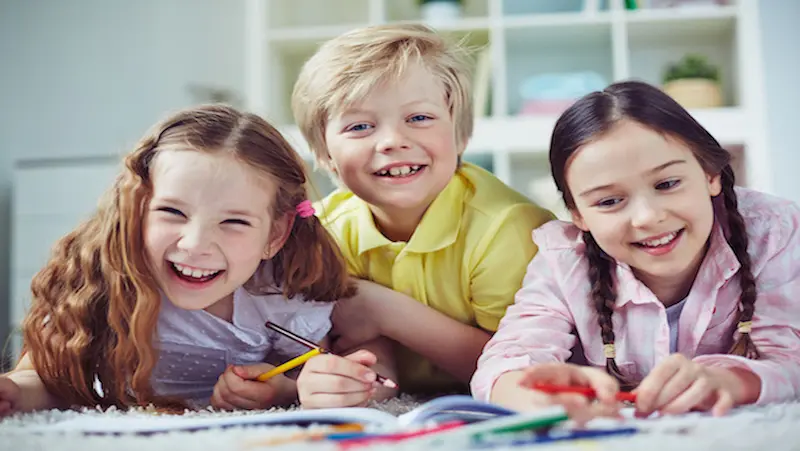
Benefits of Drawing for Kids
Drawing provides several benefits for kids. It promotes creativity, imagination, and self-expression, allowing children to visually communicate their thoughts and emotions. Drawing also enhances fine motor skills, hand-eye coordination, and concentration.
It nurtures cognitive skills such as problem-solving, critical thinking, and observation. Moreover, drawing serves as a therapeutic outlet, helping children process and cope with their emotions. It boosts confidence as children see their ideas come to life and receive positive feedback.
Additionally, fun drawing ideas encourage communication skills and storytelling abilities. Overall, engaging in drawing activities supports holistic development, fostering artistic expression, cognitive abilities, emotional well-being, and self-confidence in kids. Some of the benefits are –
1. Self-expression: Developing creativity in children allows them to express themselves in unique and personal ways. Through drawing, painting, or other artistic activities, children can communicate their thoughts, feelings, and ideas, even when they might struggle to express them verbally.
2. Problem-solving skills: Creativity encourages children to think outside the box and find innovative solutions to problems. When engaging in creative activities, they learn to explore different perspectives, experiment with new ideas, and overcome challenges, which nurtures their problem-solving abilities.
3. Imagination and storytelling: Creativity nurtures imagination, enabling children to create their own stories, characters, and worlds. By engaging in imaginative play and artistic endeavors, kids develop narrative skills, learn to think creatively and expand their imaginative capabilities.
4. Confidence building: Engaging in creative activities allows children to take risks, make choices, and trust their own instincts. As they see their ideas come to life, their confidence grows, and they develop a sense of pride and accomplishment in their creative achievements.
5. Emotional development: Artistic expression provides an outlet for children to process and communicate their emotions. Drawing, painting, or sculpting can serve as a therapeutic tool, helping children explore and understand their feelings in a safe and constructive way.
6. Critical thinking: Creative activities encourage children to think critically and analytically. They learn to observe, analyze, and interpret the world around them, making connections between different elements and developing their analytical thinking skills.
7. Communication skills: Creativity enhances communication skills as children learn to convey their ideas visually and verbally. Through artistic expression, they learn to interpret and understand visual cues, symbols, and metaphors, which enhances their overall communication abilities.
8. Fine motor skills: Engaging in art activities, such as drawing or coloring pages for kids, requires precise hand movements and control. These activities help children develop and refine their fine motor skills, improving their hand-eye coordination and dexterity.
9. Open-mindedness: Creativity encourages children to embrace diversity, different perspectives, and new ideas. By exploring various artistic styles, cultural influences, and creative techniques, children learn to appreciate and respect different forms of expression.
10. Enjoyment and stress relief: Above all, developing creativity in children is essential for their overall enjoyment and well-being. Engaging in creative activities provides a sense of joy, relaxation, and stress relief. It allows children to have fun, explore their interests, and find happiness in the process of creating something uniquely their own.
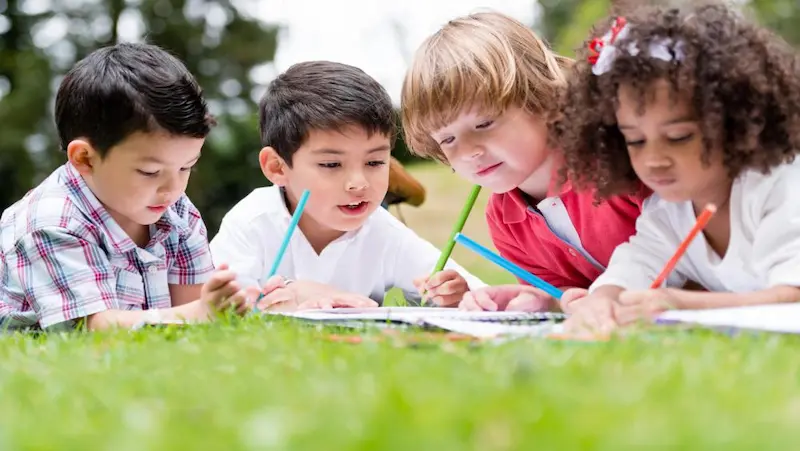
Conclusion
Drawing offers numerous benefits to a child’s overall development, extending beyond the realm of art. It serves as a powerful tool that enhances cognitive abilities, including critical thinking, problem-solving, and observation skills. By engaging in drawing activities, children learn to analyze and interpret visual information, make connections, and think creatively. These skills are transferable and valuable across various academic subjects.
Moreover, drawing promotes the development of fine motor skills and hand-eye coordination. The precise movements required to control a pencil or brush contribute to the refinement of their dexterity, which can positively impact their performance in activities such as writing and other fine motor tasks.
Drawing also plays a significant role in communication. As children draw, they learn to interpret and convey ideas visually, strengthening their ability to express themselves and communicate effectively. Additionally, drawing can help children develop narrative skills as they create stories and visuals, supporting language development and storytelling abilities.
Furthermore, drawing serves as a powerful emotional outlet. It allows children to express and process their thoughts, feelings, and experiences visually. Through art, they can explore and communicate complex emotions in a safe and nonverbal way, promoting emotional intelligence and self-awareness.
Engaging in regular drawing activities can boost a child’s confidence and self-esteem. As they see their artistic skills progress and receive positive feedback, their sense of accomplishment grows, fostering a positive self-image and belief in their abilities.
In conclusion, drawing offers a multitude of developmental benefits for children, encompassing cognitive, motor, communication, and emotional domains. Encouraging and supporting your child’s drawing endeavors can have a profound and far-reaching impact on their overall growth, creativity, and well-being.
To get your hands on more such educational and free resources on coding for kids, robotics, game development, etc., do check out the BrightCHAMPS Page now!
Frequently Asked Questions
Some easy drawing activities for kids include drawing their favorite animals, creating simple landscapes, designing cartoon characters, and experimenting with abstract shapes and patterns.
To teach your child to draw step-by-step, start with simple shapes, break down objects into basic forms, provide guided instructions, encourage practice, and offer positive feedback and encouragement throughout the process.
Drawing benefits kids by enhancing creativity, imagination, fine motor skills, problem-solving abilities, communication skills, self-expression, confidence, focus, observation skills, and emotional development, while providing a joyful and therapeutic outlet.
To encourage your child to draw more often, provide a dedicated drawing space, offer a variety of art supplies, display their artwork, join them in drawing activities, provide positive feedback, and make drawing a fun and enjoyable experience.
Yes, drawing can support your child’s development in various areas. It can enhance cognitive skills, fine motor skills, critical thinking, problem-solving abilities, communication skills, and emotional expression and regulation.

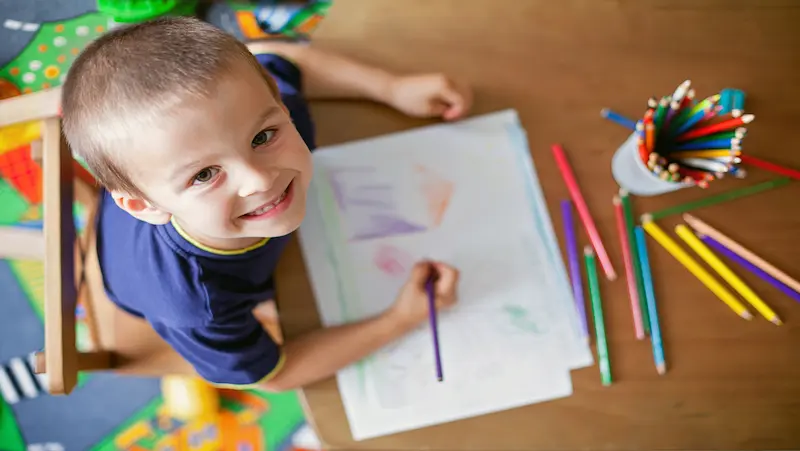
 We are an army of educators and passionate learners from BrightChamps family, committed to providing free learning resources to kids, parents & students.
We are an army of educators and passionate learners from BrightChamps family, committed to providing free learning resources to kids, parents & students.












